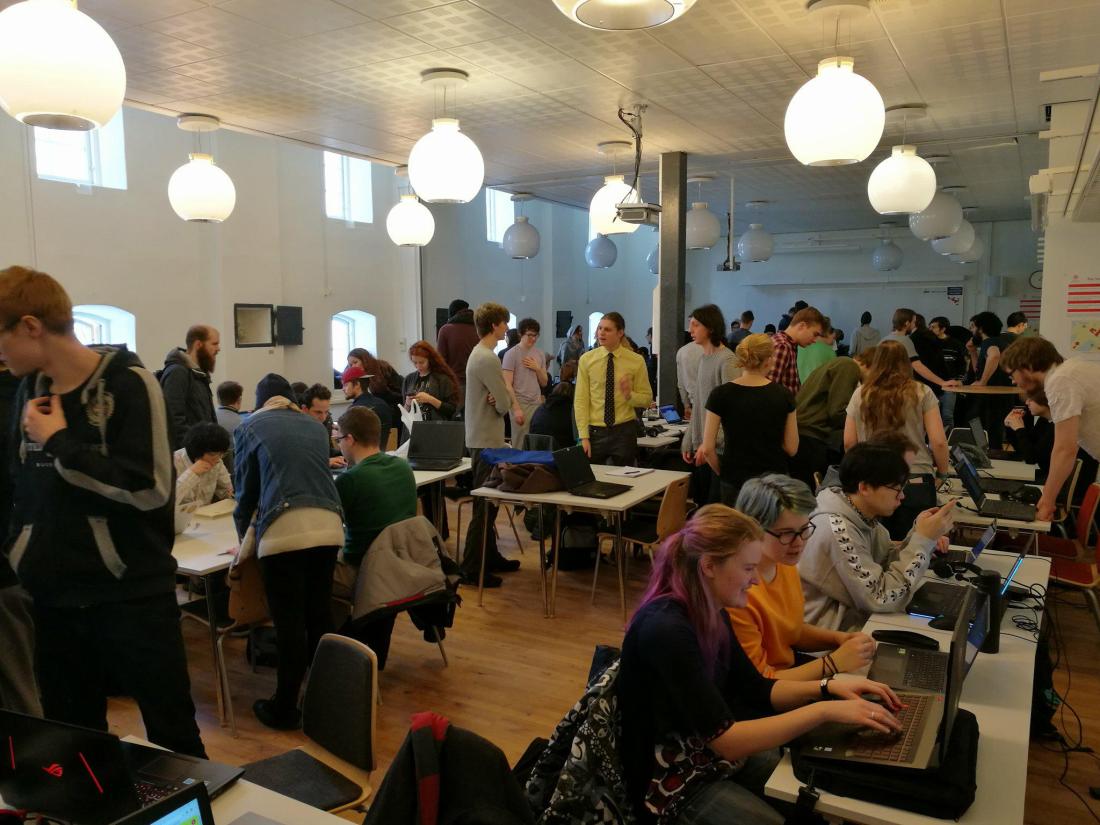Hi!
This time I am going to write a story about our pre-alpha meeting with our course representatives.
“It all started on cold, winter Monday, the 5th of February 2018. The day of pre-alpha. It was meant to be the day in which they would check and remind us that we are close to the alpha stage of our project. It also meant that we should have the results of previous two-three weeks. Even though I trusted my teammates, the excitement was felted. It filled the air. Will we meet the alpha minimum requirements?
Our group was scheduled at 15:00 hours. We went to F-building of our university. In Finn’s room, there was an unknown man sitting in his chair, looking in his laptop. His face didn’t reveal any emotion. He didn’t pay attention to anything going on around him. We were confused. Curious. We expected Mika. Only the presence of Finn, sitting behind his desk, filled us with little courage. Finn was quiet. But he was there.
The “stranger” raised his eyes and looked at us, as we were approaching the desk. He wished us a welcome, still being serious and mysterious. He introduced himself. So did we. Cautiously. He said he was just replacing Mika that afternoon. He was a teacher of art for the second- and third-year courses. We felt relieved. At least we were at the right place.
Not wasting his time, he started with first of his questions about our project. “Do you have an avatar?” Our programmer opened his laptop and started a unity application. After few moments, we could all see our avatar, moving in some church-like environment, left and right, up and down, responding to our programmer’s fingers on a keyboard. He did not make any sound. Moving between benches up, towards the top of the screen, he would run into some demonic creatures who would spit some strange, black mass on him. He would use his gun and simply take them down. That challenge seemed so easy for him, at the moment. And some numbers on the top of the screen would start changing every time he did it. It was a points counter. In other moments, he would bump into a funny little white box. That collision would make the other numbers to change. Those were his health.
And then, at some point, this little hero of ours could not get his way through those creatures. There were so many of them. Little by little in short time, his health numbers were dropping down. Soon, they came to zero. And so, he vanished.
The face of a mysterious guy did not change much. But it showed approval. He was, in his own mystical way, satisfied. And so, he thanked us and wished us good luck in further work. We did the same. And so we left…”
Reflective part
The purpose of this meeting was the showing of the alpha requirements being met, prior to an upcoming Alpha presentation. How did we present them? We have prepared a laptop with Unity application (which we use for developing our game). After launching our game, Johan (the teacher) could see our results by pressing the corresponding buttons on the keyboard. The basic movement was related to the WASD keys. The basic attack projectile was triggered by the left mouse click. Basic GUI was presented in form of numbers in the upper left corner of the screen. They were representing the health value of the avatar. One power-up was presented by the health box, placed on a tile of a level, which could have been activated by colliding the avatar with it. It would change the numerical value representing the avatar’s health, adding 25 points value. The losing condition was presented by reducing the numerical value of the avatar’s health to zero.
After the presentation, Johan asked us if we have any problems and obstacles during the development [there wasn’t any at that moment] and wished us good luck.

